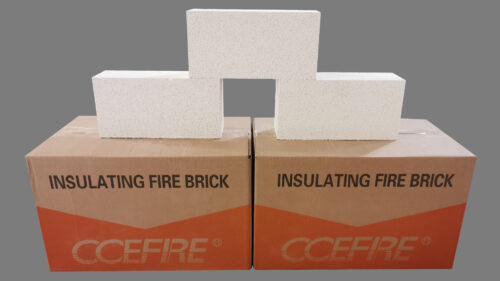What is the composition of ceramic paper?
- 24 Sep, 2025
- Industry

The core composition of ceramic fiber paper is primarily high-purity silicon dioxide (SiO₂) and aluminum oxide (Al₂O₃), with some high-grade types containing zirconia (ZrO₂) to enhance maximum temperature resistance and anti-corrosion properties. These components, in carefully designed proportions, give the material excellent thermal stability and insulation performance. Depending on the application, small amounts of organic or inorganic binders may also be used.
Product Advantages: Lightweight but Powerful
Outstanding Insulation: With very low thermal conductivity, it significantly reduces heat loss even above 1000°C.
Lightweight and Flexible: Uniform thickness and easy cutting allow it to adapt to complex sealing structures.
Safe and Eco-Friendly: High-purity, low-impurity formulas ensure no smoke or harmful emissions at high temperatures.
Excellent Thermal Shock Resistance: Fiber structure helps it endure repeated heating and cooling cycles without cracking or powdering.
Application Value: An Ideal Insulation Material Across Industries
Industrial Furnaces: Used as backing insulation or sealing gaskets, it enhances furnace efficiency and extends lining life.
Electrical and Household Appliances: Applied in ovens, stoves, and heaters as gasket materials, improving insulation while protecting user safety.
High-Tech Manufacturing: Widely used in metallurgy, glass, ceramics, and aerospace applications for high-precision, high-stability insulation.
CCEWOOL® Advantage: Craftsmanship Defines Quality
CCEWOOL® ceramic paper is produced with advanced wet-forming technology:
Uniform Fiber Distribution ensures consistent thickness and reduces localized heat loss.
Automated Temperature-Controlled Drying enhances dimensional stability and prevents shrinkage during use.
Strict Impurity Control guarantees long-term durability, ensuring smoke-free, odor-free performance under high-temperature operation.
Ceramic fiber paper is more than just a material made of SiO₂ and Al₂O₃—it is a fusion of composition and advanced manufacturing. With superior insulation, lightweight flexibility, and eco-friendly properties, CCEWOOL® ceramic paper has become the ideal insulation solution for industrial furnaces, electrical appliances, and high-temperature manufacturing systems.



